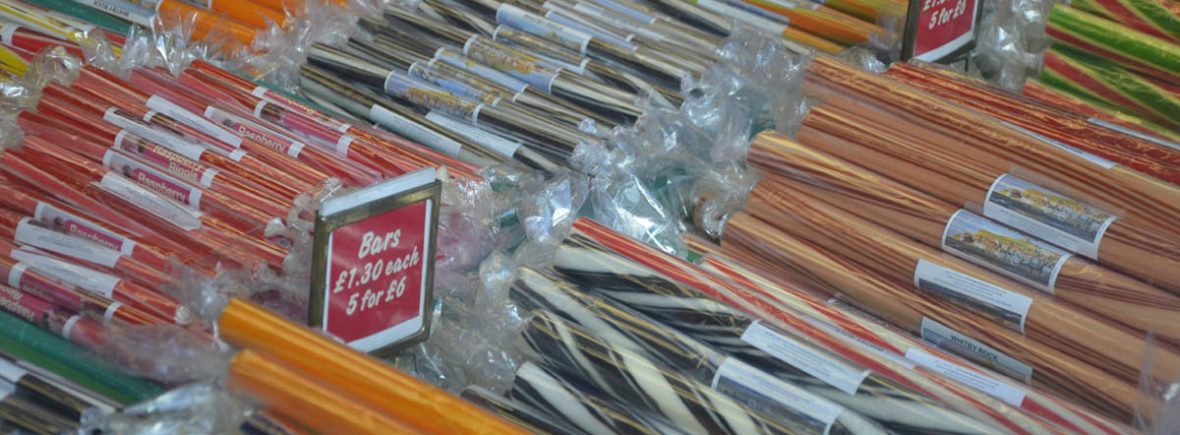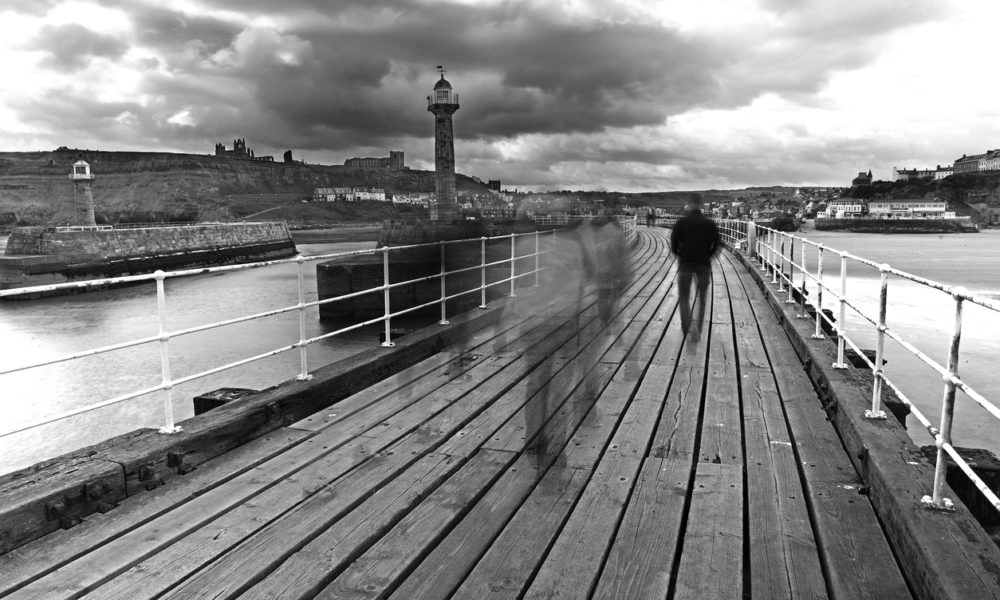The history of seaside rock
A stick of rock is as popular today as it’s ever been. It is an image connected with childhood memories of trips to the seaside in the UK.
But who came up with the idea?
The earliest form of rock is believed to have sold at fair grounds, namely Fair Rock in the 19th Century when sugar was plentiful and inexpensive. It was not brightly coloured or lettered in those days but it was of similar shape and size as it is today.
Depending on sources, it is said to be linked to Ben Bullock. He was an ex-miner from Burnley, who conceived the idea whilst holidaying in Blackpool. He began producing sticks of brightly coloured lettered candy at his Yorkshire-based sweet factory in 1887. He sent his first batch of lettered rock to retailers in Blackpool, where it was well received. Other sources say a Victorian character by the name of Dynamite Dick who came from either Morecombe or Blackpool is said to have ‘borrowed’ the idea from Fair Rock and added lettering to the design to make it is own.

How is it made?
It takes an incredible amount of skill to create seaside rock. Skill that 21st century machines are still unable to master. The rock is hand made by practised craftsman called Sugar Boilers. The sugary syrup is mixed with water and boiled. It is then poured onto a cooling table and separated into parts. At this point, the Sugar Boiler’s assistant will be given the larger, uncoloured portion of the batch to ‘pull’. Pulling used to be done manually – but the effect is now achieved by using a pulling machine. The pulling machine has two moving arms, one which rotates clockwise, and the other which rotates anticlockwise. The movement of this machine helps to aerate the toffee and turns it from a golden mass into the white, cloudy appearance that forms the centre of the stick of rock. The remaining outer layer and lettering sections are coloured.
Getting the lettering correct is a skill that can take 10 years to master, as rock is often up to six feet long before it is cut.
Smaller sticks of rock, without letters or a ‘view’ can be machine manufactured but the process of making lettered rock is done by hand by skilled workers. The letters are not made according to how they appear in the piece of rock, but instead by their shape. For example, square letters such as E, F and H are made first as they do not lose their shape. Letters such as A and V or those that have a rounded element (such as C, G and S) are made last so that they do not lose their shape (the toffee is still reasonably soft at this point).
The lettering, filling and core are rolled together before they are wrapped in the brightly coloured outer casing. The whole slab is then stretched into smaller, longer strips by a machine, before being cut and wrapped ready for sale.
Whitby Rock Shops:
Jane’s Rock Shop – 1 Sandgate, Whitby YO22 4DB
The Candy Rock King – 8 Pier Rd, Whitby YO21 3PU

